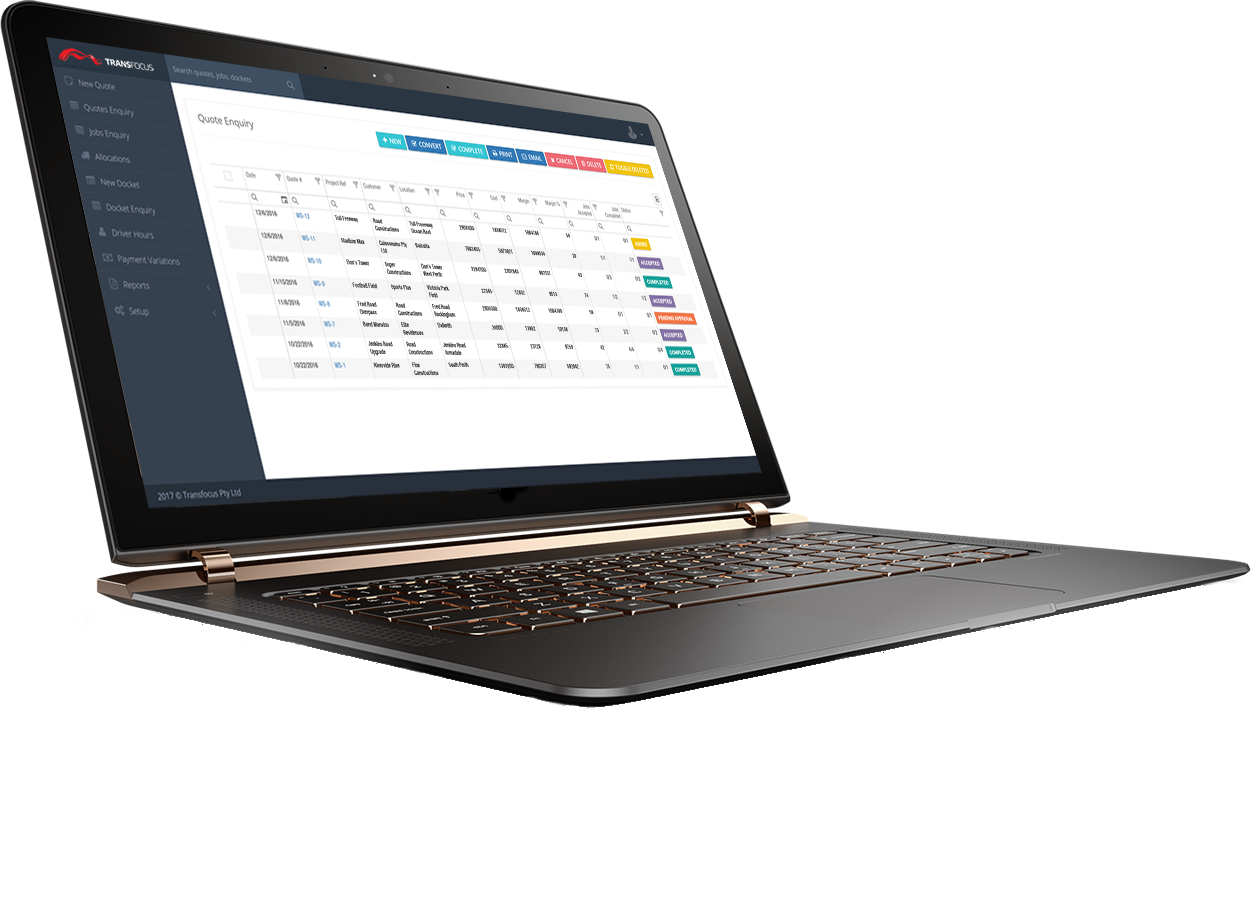Bulk Haulage Solution

A bulk haulage transport company needed a management system to quote their clients, improve their operational efficiency and measure their business performance.
All their work needed to be quoted, with each quote needing to be able to accommodate separate jobs within it, while supporting jobs types such as cartage only, supply and cartage, cartage and disposal. Each quote needed to provide an estimate of profitability based on the planned use of resources, including both vehicle types and subcontractors. Successful quotes may only apply for some of the jobs on that quote.
Our client also wanted to improve their efficiency in capturing weighbridge dockets, preventing double entry, and meeting the requirements of having to use different weighbridge docket types.
From a financial perspective they needed to be able to generate both their clients’ invoices and Recipient Created Tax Invoices (RCTI) so as to pay their subcontractors.
One final requirement was the provision of reports on their actual profitably, taking into account all costs, including driver hours and per kilometre vehicle rates.
The Transfocus Solution
Due to the nature of our client’s contracts, contracts that resulted in the need to move thousands of tonnes of materials between sites, it was impractical to dispatch jobs to drivers’ phones, as would be done using general transport procedures. Although our Transport Management System already handled the multiple loads for bulk haulage jobs we did not have a quoting and dispatch system to send out a daily work schedule.
As we designed our system from the outset with flexibility and customisation in mind, we were able to develop a custom software solution that re-used all of the core elements from our Transport Management System.
In our tailored software solution our client was able to generate quotes for all the different kinds of work they do, as well as email and track quotes directly from the system. When they win work, one or more jobs on the quote can easily be converted to a live job allowing weighbridge documents to be assigned.
During the course of the development the client saw how easy the system was going to be to use so they started planning a second phase project that would allow the drivers to capture weighbridge documents electronically and completely remove the need for manual entry.

